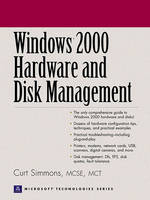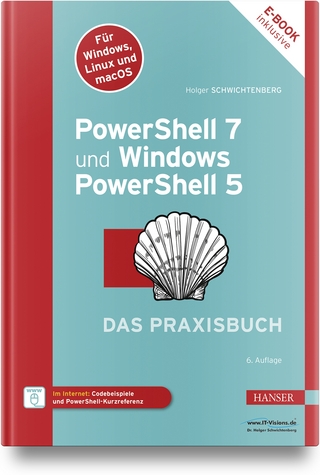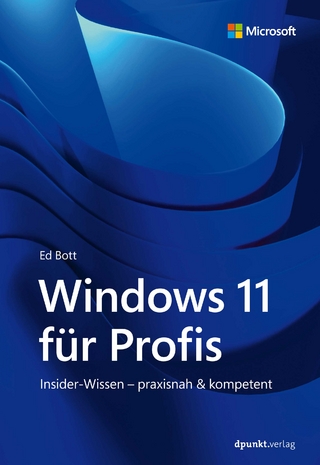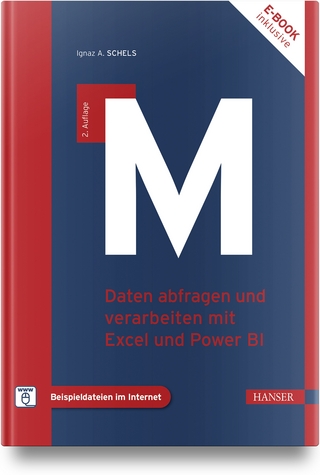
Windows 2000 Hardware and Disk Management
Prentice Hall (Verlag)
978-0-13-089104-4 (ISBN)
- Titel ist leider vergriffen;
keine Neuauflage - Artikel merken
When it comes to hardware and disk support, IT professionals and users upgrading to Windows 2000 will encounter powerful new opportunities -- and surprising challenges. Windows 2000 Hardware and Disk Management is the only book focused entirely on helping administrators and users make the most of peripherals and disks in both Windows 2000 Server and Windows 2000 Professional. Using many examples and a practical, quick-reference format, Curt Simmons offers detailed coverage of Windows 2000 peripheral and disk compatibility, configuration, troubleshooting, and management tools. Windows 2000 Hardware and Disk Management starts with a detailed review of the unique issues associated with modems, printers, network adapter cards, scanners, digital cameras, USB devices, and plug-and-play support in Windows 2000. Next, the book introduces each of Windows 2000's powerful new options for disk management, including the Distributed File System (Dfs), Encrypted File System (EFS), dynamic disks, online and offline disks, fault tolerance, disk quotas, backup, and more.
CURT SIMMONS is an author and technical trainer specializing in Microsoft operating systems, BackOffice products, and Internet technologies. A Microsoft Certified Systems Engineer (MCSE) and Microsoft Certified Trainer (MCT) based in Dallas, TX, his books include Configuring Windows 2000 Server and Creating Active Directory Infrastructures (Prentice Hall PTR).
(NOTE: Each chapter concludes with Summary and/or Q&A.)I. INSTALLING & CONFIGURING WINDOWS 2000 HARDWARE.
1. Managing Hardware in Windows 2000.
Understanding Plug and Play. Checking the HCL. Adding New Hardware to Your System. Using the Add/Remove Hardware Wizard to Add New Hardware. Using the Add/Remove Hardware Wizard to Troubleshoot a Device. Using the Add/Remove Hardware Wizard to Uninstall/Unplug a Device. Using Device Manager. Hardware Configuration Options in System Properties. Understanding System Resources.
2. Configuring Modems.
How Modems Work. Installing Modems. Configuring Dialing Rules. Configuring the Modem. Configuring a Dial-Up Connection. Using HyperTerminal. Using the Phone Dialer.
3. Managing Network Adapter Cards and USB Devices.
How Network Interface Cards Work. Installing Network Interface Cards. Configuring Network Interface Cards. Binding the Network Adapter to Protocols. Installing and Configuring Universal Serial Bus Devices. Understanding USB Controllers and Hubs. About USB Devices.
4. Setting Up Printers.
Printing Overview. New Windows 2000 Print Features. Installing Printers. Configuring the Printer. Setting Up Client Computers to Access Shared Printers. Printing to Macintosh and UNIX Servers. Managing Print Documents.
5. Video and Sound Cards.
Installing Video Cards. Configuring Display Settings. General. Adapter. Monitor. Troubleshooting. Color Management. Solving Problems with a Video Card. Using Multiple Video Cards and Monitors. Installing Sound Cards. Configuring Sound and Multimedia. Sounds. Audio. Hardware.
6. Other Peripherals.
FAX. User Information. Cover Pages. Status Monitor. Advanced Options. Scanners and Cameras. Game Controllers. Mouse and Keyboard. Power Options.
7. Troubleshooting Hardware Devices.
Windows 2000 Troubleshooting Tools. Hardware Problems and Solutions. Modems. Network Adapter Cards. USB Devices. Printers. Video Card. Sound Card. Other Peripherals.
II. WINDOWS 2000 DISK MANAGEMENT.
8. Windows 2000 Hard Disk Basics.
How Hard Disks Work. Windows 2000 File Systems. FAT. FAT32. NTFS. The Disk Management Console.
9. Dynamic Disks in Windows 2000.
Dynamic and Basic Disks. Upgrading a Basic Disk to a Dynamic Disk. Writing Disk Signatures. Returning to a Basic Disk. Understanding Disk States. Adding a New Disk. Removing a Disk. Examining Disk Properties.
10. Configuring Dynamic Volumes.
Creating a New Simple Volume. Mounting a Simple Volume to an Empty Folder. Extending a Volume. Creating Spanned Volumes. Creating Striped Volumes. Common Volume Tasks. Dynamic Volume States. Configuring Volume Properties.
11. Configuring Windows 2000 Fault Tolerance.
What Is Fault Tolerance? Configuring Mirrored Volumes. Creating a Mirrored Volume. Resynchronizing the Mirrored Volume. Breaking a Mirror. Removing a Mirror. Repairing a Mirrored Volume. Booting From a Mirror. Configuring RAID 5 Volumes. Creating a RAID 5 Volume. Repairing a RAID 5 Volume.
12. Windows 2000 Backup.
Backup Options in Windows 2000. Backup Types. Using Windows Backup.
13. Windows 2000 Disk Tools.
Disk Cleanup. Error Checking. Disk Defragmenter. Scheduled Tasks. Event Viewer.
14. Troubleshooting Disk Problems.
Troubleshooting Specific Disk Problems. Problems with a SCSI Hard Disk. Check for Access to the Boot Partition. Tape Devices and Floppy Disk Drive. Using More than Two IDE or ESDI Devices. Test the Drive on Another Computer. Check the Drivers. General Troubleshooting.
III. WINDOWS 2000 STORAGE FEATURES.
15. Remote Storage.
Remote Storage Concepts. How Remote Storage Works with Removable Storage. Setting Up and Using Remote Storage. Volume Management. Managing Media.
16. Removable Storage.
Understanding Removable Storage. Understanding Media Pools. Understanding Media States. Using Removable Storage. Configuring and Managing Libraries. Configuring Media Pools. Configuring and Managing Physical Media. Configuring Queued Work and Operator Requests. Configuring Removable Storage Security. Using Removable Storage Command Line.
17. Additional Storage Technologies.
Using Compression. Using Encrypting File System (EFS). Using Disk Quotas.
18. Distributed File System.
Understanding Dfs. Configuring a Stand-Alone Dfs. Creating Dfs Links. Configuring a Domain-Based Dfs.
19. Troubleshooting Windows 2000 Storage.
Remote Storage. Removable Storage. Disk Quotas. Encrypting File System and Compression. Distributed File System.
IV. WINDOWS 2000 FILE MANAGEMENT.
20. File and Folder Management and Security.
NTFS Permissions. Assigning NTFS Permissions. Advanced Access Permissions. Managing Shared Folders. Synchronization Manager. Setting Up Your Computer to Use Offline Files. Making a File or Folder Available Offline. Setting Up Synchronization Manager.
21. Indexing Service.
Indexing Service. Installing the Indexing Service. Configuring the Indexing Service. Creating a New Catalog. Performing Manual Catalog Scans. Checking Indexing Service Performance. Retrieving a List of Unindexed Documents. Preventing an NTFS Directory or Document from Being Indexed.
Appendix: Using the Microsoft Management Console.
What is the MMC? Adding Snap-ins. Choosing an MMC Mode. Using Multiple Windows.
Index.
| Erscheint lt. Verlag | 25.5.2000 |
|---|---|
| Verlagsort | Upper Saddle River |
| Sprache | englisch |
| Maße | 177 x 235 mm |
| Gewicht | 620 g |
| Themenwelt | Informatik ► Betriebssysteme / Server ► Windows |
| Informatik ► Betriebssysteme / Server ► Windows Server | |
| Mathematik / Informatik ► Informatik ► Netzwerke | |
| ISBN-10 | 0-13-089104-5 / 0130891045 |
| ISBN-13 | 978-0-13-089104-4 / 9780130891044 |
| Zustand | Neuware |
| Haben Sie eine Frage zum Produkt? |
aus dem Bereich


